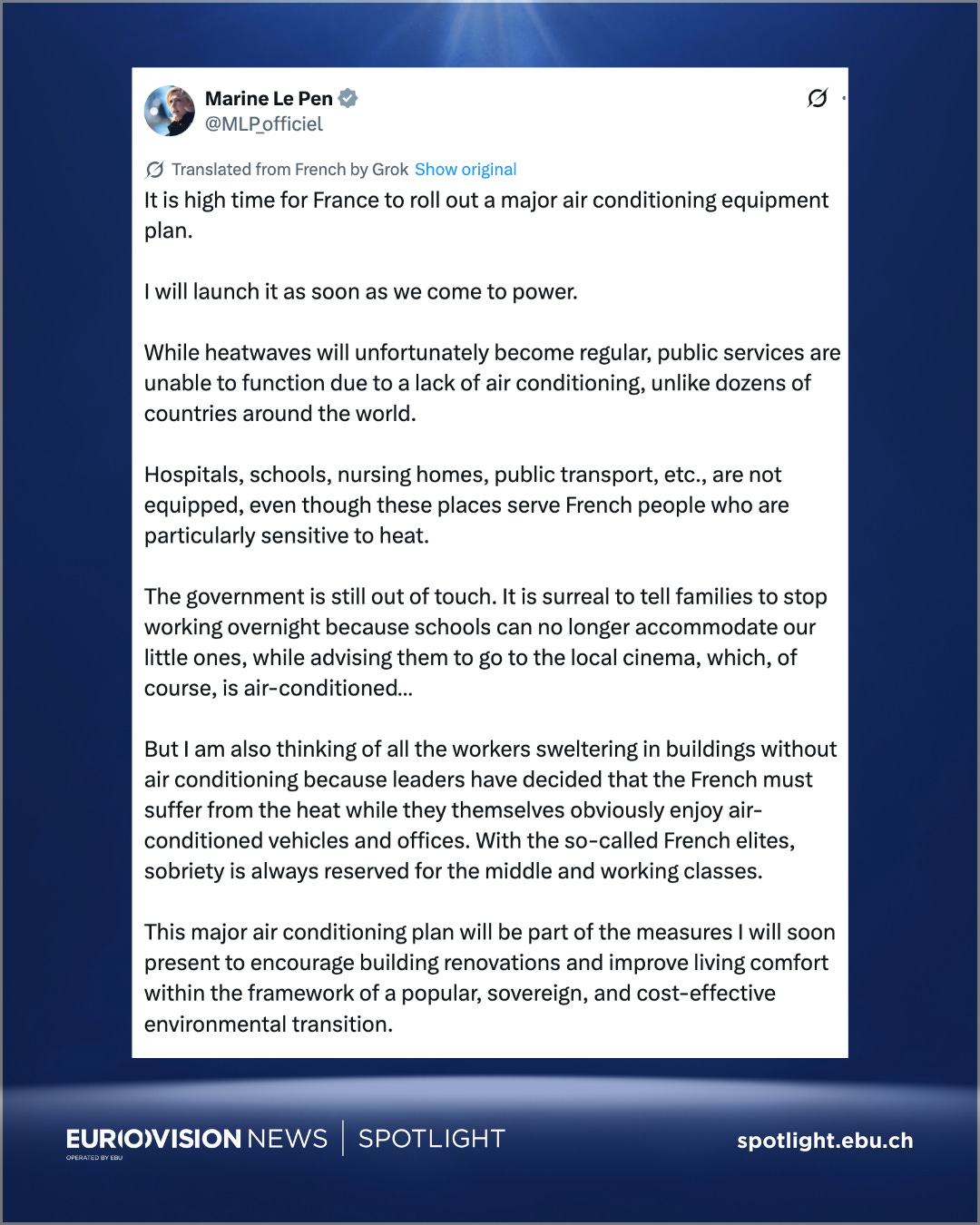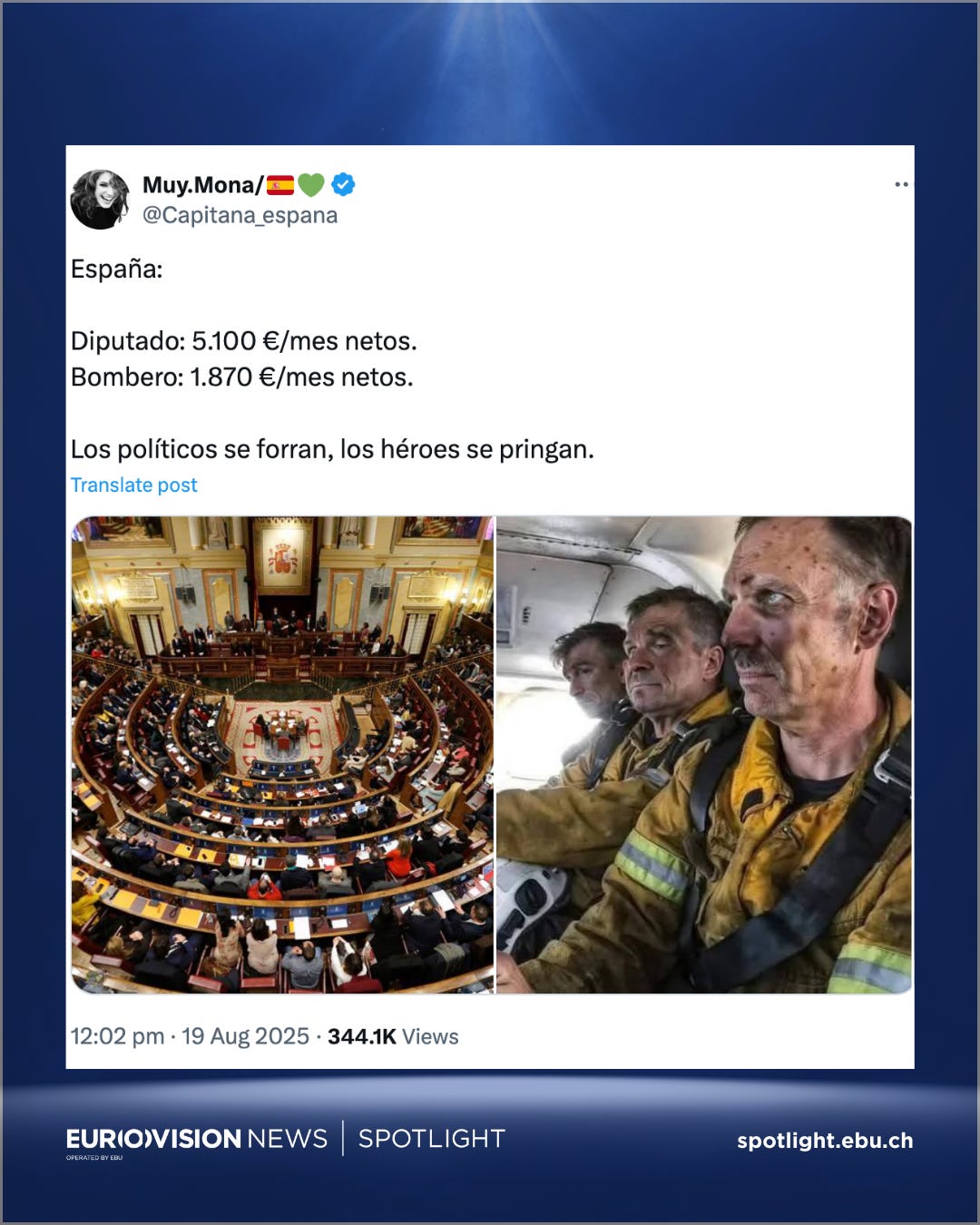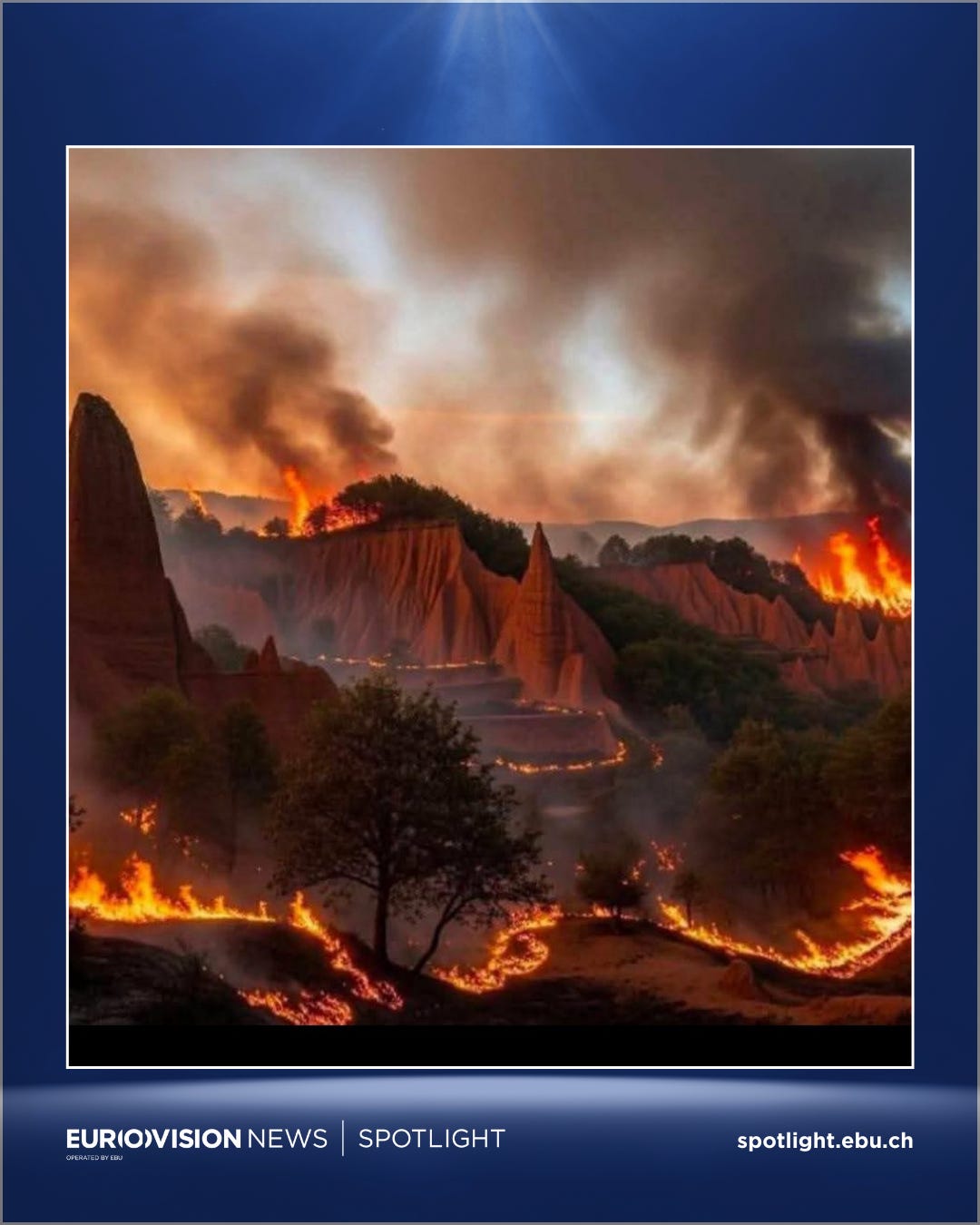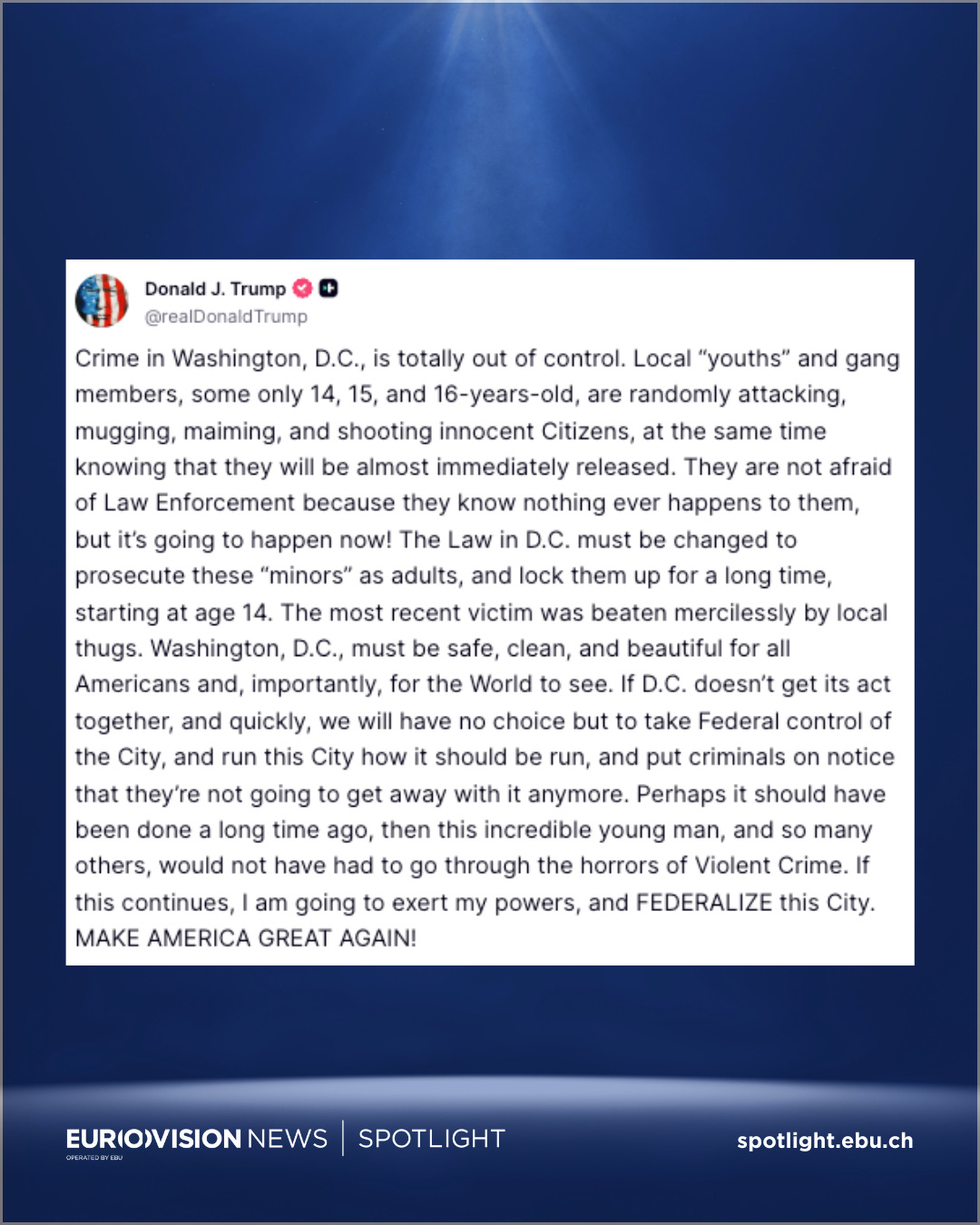Fact-Check Dispatch: Climate in focus as Europe burns up, and Trump claims to end a war a montH
False claims sprung up amid the debate on air conditioning, the scorched earth in Spain, and directly from the White House
Amid a summer of blistering heat and devastating fires, a familiar discomfort has settled across Europe. The continent's growing vulnerability to climate change has ignited a fresh debate over a simple question: to install air conditioning, or not?
The technology's merits have long been debated, but this year's sweltering summer created fertile ground for a new wave of misinformation.
As Spain battled devastating wildfires, conspiracy theories about the cause of the blazes took hold, often fuelled by old or AI-generated images mixed in with real footage.
The spread of false claims wasn't limited to the climate crisis.
Amid the chaos, a separate political assertion gained traction: Donald Trump's claim that he ended a war every month while in office. While experts give him credit for contributing to a few ceasefires, the sweeping, opaque claim required more scrutiny.
Here’s our Fact-Check Dispatch.
Climate crisis and the A/C debate
The climbing summer temperatures each summer usually give rise to a wave of discourse about climate change—not least whether the mercury really is rising at all.
Despite evidence that several countries are breaching heat records year-on-year, claims are still made that it used to be just as hot in the past. Is this accurate, or is our memory deceiving us?
Reporting for BR24’s #Faktenfuchs, Sophie Rohrmeier and Claudia Kohler dug into the figures for Bavaria, which showed that the number of hot days have increased since 1951.
Some dismiss the facts of the warming planet as “scaremongering”, including the AfD’s Beatrix von Storch, who wrote on X: “We used to call it 'summer.' We weren't afraid of heat deaths then, and we didn't talk about heat protection plans. We got a day off from work, were happy, and went to the outdoor pool.” Her party colleague Stephan Protschka, who denies man-made climate change, was also vocal on the topic, saying reports of unprecedented heat every year were “absurd”.
Rohrmeier and Kohler spoke to a climate expert who confirmed “summer is changing”, and outlined how the cherry-picking of individual hot summers from the past are not an indication of what every summer was like in years gone by.

As record-breaking heatwaves swept across Europe this summer, a familiar debate re-emerged: the continent’s limited use of air conditioning compared to North America.
Every year, the heat plays a role in some 175,000 deaths in the EU, according to the World Health Organization. With temperatures in southern Europe regularly creeping towards 40 degrees Celsius, and in some cases surpassing it, is it time for us to finally embrace A/C?
There are several arguments against the technology in Europe, including a belief in some countries that the cold air makes you sick. But with temperatures rising as a result of climate change, prompted in part by our high energy usage, the carbon footprint of air conditioning units came into focus this summer.
Writing for France Info’s Vrai ou Faux, Thomas Pontillon reported on comments by National Rally MP Yoann Gillet, who stated that “no scientific study shows that air conditioning is harmful to the environment. None.” His comments came as the party was calling for a major plan to install air conditioning in buildings like schools, hospitals, and workplaces.
But, as Pontillon writes, air conditioning is harmful to the environment, and there are several studies to back this up. “The Ecological Transition Agency states in its latest estimate that air conditioning in France emitted almost 4.5 million tonnes of CO2 in 2020. This is almost 1% of the country's greenhouse gas emissions that year. This may not seem like much, but in 2020, only a quarter of homes and less than half of businesses were equipped with air conditioners,” he outlines. Firstly, the appliances are powered by electricity, but an even greater polluting factor is the refrigerant gas that is used in air conditioners—some of which escapes from the machines and emits significant CO2.
With any luck, these appliances and the refrigerants used in them will become more environmentally friendly in the years to come. For now, governments, businesses and homeowners will have to balance need against emissions.

Spain’s devastating wildfires spark theories
With the high temperatures also came devastating fires in several countries, with Spain and Portugal worst hit. More than half a million hectares have been burned in Europe so far this year, in one of the worst waves of wildfires to hit the region in years.
Thousands of people were forced to evacuate their homes in Spain and several were killed. The news story brought genuine, frightening images to our screens. However, the interest in the story also prompted a deluge of old or false images claiming to be related to the fires, as well as unsubstantiated claims about the disaster.
For example, a teenager was arrested for allegedly starting several fires in Galicia, and social media users immediately jumped to the conclusion that he was a foreigner. VerificaRTVE reported that the local authorities confirmed the person had no foreign nationality. In another case, an image circulated showing firefighters covered in soot—which was linked to Australia in 2019, even though this newer version bore some signs of having been digitally manipulated. The same image circulated in 2024 when there were fires in Argentina.
There were also plenty of AI-generated images in circulation as the fires took hold. VerificaRTVE reported on several dramatic shots claiming to show the fires in Castile and León and of firefighters resting on the ground as the flames rose up around them.
Using a range of AI detection tools and reverse image searches, the reporters confirmed the provenance of the Castile and León image. They also managed to find it on Facebook, where it appeared with an AI-generated label.
Besides visual fact-checks, the verification team at Spain’s national broadcaster also published a number of explainers giving the facts on the way forward, the law, and the conspiracy theories that spread as prolifically as the fires themselves.
Speculation on the summer’s fires involved claims that they were located near rare earth deposits, and were set alight with an aim of extracting the materials. There were also claims that the land was destined for wind farms or solar power plants. In actual fact, any forested areas that are destroyed are generally required to be restored by the regional authorities.
Amid the discourse, there were also questions about whether enough was being done to prevent these disasters. VerificaRTVE broke down the responsibilities held by local, regional and national authorities, which each have mechanisms and laws they must follow. There are also helpful methods being used by some communities, such as preventative agricultural grazing. Educational articles like this one are important civic resources, and enable people to monitor whether enough is being done in their area.
Trump claims fact-checked
In August, Donald Trump deployed the National Guard in Washington, D.C. and placed the city’s police department under federal control, declaring that crime in the U.S. capital was “out of control”. It sparked concern that the president may use this as a blueprint to seize control of other American cities where there is strong dissent to his leadership.
But how true were the claims of D.C.’s danger, really? Reporting for Deutsche Welle, Astrid Prange de Oliveira writes that the claim that the District of Columbia is “among the most violent jurisdictions in the United States” was misleading. D.C. is not a state, so a comparison with other major cities is more appropriate, she writes. And as to how it stacks up against other cities: homicide rates were higher in St. Louis, Missouri, and New Orleans.
Another of Donald Trump’s high-profile claims also came under scrutiny—in which he said that he had settled six wars in six months. SVT Verifierar’s Henrik Silver, Linus Svensson, Stephanie Mourad, and Simon Krona probed the president’s efforts as a peace broker. Speaking to a peace and conflict researcher, they found that the claim was exaggerated.
White House press secretary Karoline Leavitt outlined what the six wars were: Thailand and Cambodia, Israel and Iran, Rwanda and the Democratic Republic of Congo, India and Pakistan, Serbia and Kosovo, and Egypt and Ethiopia. In another press conference, Leavitt referenced “the closing of seven global conflicts”.
Professor of peace and conflict research at Uppsala University, Isak Svensson, gave Trump credit for his contributions to ending some of these conflicts, but even in those cases, not all represented a sustainable peace.
Armêl Balogog writes for France Info that the U.S. president has played an important role in bringing peace to three conflicts since he returned to power. A peace agreement signed between Armenia and Azerbaijan in early August ended four years of conflict. In Cambodia and Thailand, a ceasefire agreement ended a five-day war in July. And in Israel and Iran, calm was restored after a 12-day war in June, although as Balogog notes: “It should be remembered that the United States also participated in that war by bombing Iranian nuclear sites”.
“Some experts also give Donald Trump credit in a fourth conflict, the one between India and Pakistan last spring (…) The American president welcomed having obtained a ‘total and immediate ceasefire’ in this conflict. But India denies any involvement of the United States in the peace negotiations. According to it, there was no mediation; the conflict was settled between the two belligerents.”
You may notice that one of these—Armenia and Azerbaijan—was not mentioned on Leavitt’s original list. Balogog writes: “To reach six conflicts, two are missing. However, the American president doesn't always mention the same ones, and neither does the White House.”
This is why wading through the web of claims coming from the White House is not just difficult, but a crucial act of journalistic due diligence, especially in an age when readers are more likely to share a headline than read the story it represents.






